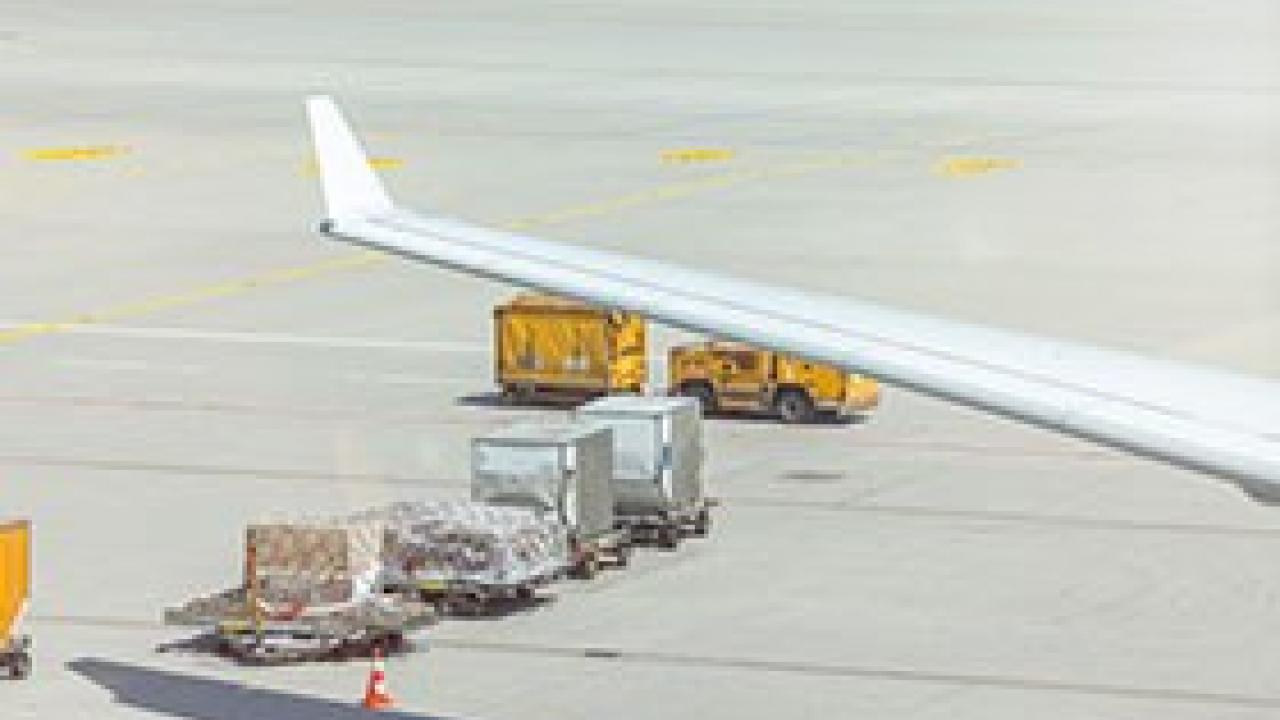Middle Eastern carriers see a 9.2% rise in cargo volumes in March

Image: IATA
March demand reached the highest level recorded since the series began in 1990. Month-on-month demand also increased albeit at a slower pace than the previous month with volumes up 0.4% in March over February 2021 levels.
Because comparisons between 2021 and 2020 monthly results are distorted by the extraordinary impact of COVID-19, unless otherwise noted all comparisons to follow are to March 2019 which followed a normal demand pattern.
Global demand, measured in cargo tonne-kilometers (CTKs*), was up 4.4% compared to March 2019 and 0.4% compared to February 2021. This was a slower rate of growth than the previous month, which saw demand increase 9.2% compared to February 2019. A weaker performance by Asia-Pacific and African carriers compared to February contributed to softer growth in March.
Global capacity, measured in available cargo tonne-kilometers (ACTKs), continued to recover in March, up 5.6% compared to the previous month. Despite this, capacity remans 11.7% below pre-COVID-19 levels (March 2019) due to the ongoing grounding of passenger aircraft. Airlines continue to use dedicated freighters to plug the lack of available belly-capacity. International capacity from dedicated freighters rose 20.6% in March 2021 compared to the same month in 2019 and belly-cargo capacity dropped by 38.4%
Underlying economic conditions remain supportive for air cargo:
This is evidenced in the new export orders component of the manufacturing Purchasing Managers’ Index (PMI) which stood at 53.4 in March. Results above 50 indicate manufacturing growth versus the prior month.
Demand for exports grew broadly in March. This was concentrated in developed countries during January and February.
Delivery times for manufactured goods are increasing which normally indicates increased demand for air cargo in efforts to recover time.
Global trade rose 0.3% in February – the ninth consecutive monthly increase and the longest continuous growth in more than two decades.
“Air cargo continues to be the bright spot for aviation. Demand reached an all-time high in March, up 4.4% compared to pre-COVID levels (March 2019). And airlines are taking all measures to find the needed capacity. The crisis has shown that air cargo can meet fundamental challenges by adopting innovations quickly. That is how it is meeting growing demand even as much of the passenger fleet remains grounded. The sector needs to retain this momentum post-crisis to drive the sector’s long-term efficiency with digitalization,” said Willie Walsh, IATA’s Director General.
Middle Eastern carriers posted a 9.2% rise in international cargo volumes in March 2021 versus March 2019. Month-on-month, Middle East carriers posted the strongest growth of all regions, up 4.4%. Of the region’s key international routes, Middle East-North America and Middle East-Asia have provided the most significant support, rising 28% and 17% respectively in March compared to March 2019. International capacity in March was down 12.4% compared to the same month in 2019.
Other March Regional Performance
African airlines’ cargo demand in March increased 24.6% compared to the same month in 2019, the strongest of all regions. Robust expansion on the Asia-Africa trade lanes contributed to the strong growth. March international capacity decreased by 2.1% compared to March 2019.
Asia-Pacific airlines saw demand for international air cargo drop 0.3% in March 2021 compared to the same month in 2019. The slight weakness in performance compared to the previous month was seen on most of the trade lanes connected with Asia. International capacity remained constrained in the region, down 20.7% versus March 2019. The region’s airlines reported the highest international load factor at 78.4%.
North American carriers posted a 14.5% increase in international demand in March compared to March 2019. This strong performance reflects the strength of the economic recovery in the US. In Q1, US GDP rose by 6.4% in annualized terms, up from 4.3% in Q4 bringing the country’s economy close to pre-COVID levels. The business environment for air cargo remains supportive; the new export orders component of the PMI rose to its highest level since 2007. International capacity grew by 1.8% compared with March 2019.
European carriers posted a 0.7% increase in demand in March compared to the same month in 2019. Improved operating conditions and recovering export orders contributed to the positive performance. International capacity decreased by 17% in March 2021 versus March 2019.
Latin American carriers reported a decline of 23.6% in international cargo volumes in March compared to the 2019 period; this was the worst performance of all regions. Drivers of air cargo demand in Latin America remain relatively less supportive than in the other regions. International capacity decreased 46.0% compared with March 2019.
Stay up to date
Subscribe to the free Times Aerospace newsletter and receive the latest content every week. We'll never share your email address.

